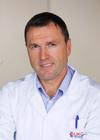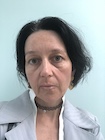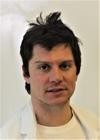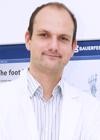
2018
ABOUT iCAT 2018 VENUE OF iCAT REGISTRATION & FEE INVITED LECTURES CONFERENCE PROGRAMME ORGANISERS COMMITTES SPONSORS PHOTOGALLERYiCAT 2018 Invited lectures

The use of 3D printing technology in the clinical management of disease conditions is rapidly gaining popularity. Yet, best practices remain to be defined and validation studies are lacking.

Due to the features of 3D printing that are particularly suitable for the field of orthopaedics, more and more innovative medical devices have been developed based on metal 3D printing.


-100x140.jpg)
Dentofacial deformities are severe skeletal changes of the face which are connected with the functional and esthetic problems. They are corrected with surgical procedures known as orthognathic surgery. The classical 2D diagnostic procedures are more and more replaced with 3D methods.

Application of additive manufacturing in medicine has the potential to significantly improve the clinical practice in MRI-based image-guided adaptive brachytherapy (IGABT). The standard applicators available on the market do not always enable an acceptable dose coverage of a tumour and sometimes do not fit the patient anatomy.

The complex anatomy of maxillofacial skeleton increases the complexity of its reconstruction and presents a challenge when trying to achieve acceptable functional and aesthetic outcomes. Facial skeleton provides support for the soft tissues and is crucial in determining the shape of the face. That's why bony reconstruction has to be done as precisely as possible. To achieve this goal, the bony reconstruction has to be planned

Pedicle screw placement using a freehand technique has a high incidence of pedicle perforation. The said risk can be reduced with intra-operative fluoroscopy or navigation, which have some disadvantages. A promising principle for solving most of the issues is the use of Additive Manufacturing technology.





